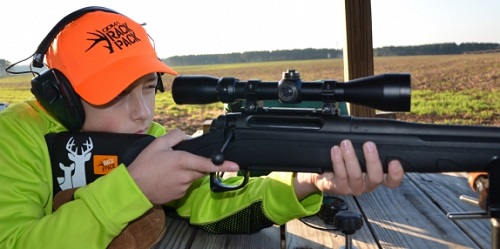 I consider myself a good rifle shooter. Not a great one but a good one. I’ve put a lot of venison in the freezer with a rifle or muzzleloader and can honestly count on one hand the number of animals I’ve hit and not recovered. However, I had a unique opportunity recently to spend some time with an expert marksman, and what I learned will make the time I spend practicing much more efficient and effective. Basically it will make me a far, far better shooter, especially at long ranges, and I’d like to share that information with you.
I consider myself a good rifle shooter. Not a great one but a good one. I’ve put a lot of venison in the freezer with a rifle or muzzleloader and can honestly count on one hand the number of animals I’ve hit and not recovered. However, I had a unique opportunity recently to spend some time with an expert marksman, and what I learned will make the time I spend practicing much more efficient and effective. Basically it will make me a far, far better shooter, especially at long ranges, and I’d like to share that information with you.

I was giving a presentation on whitetail biology and behavior at Hudson Farm in Andover, New Jersey. Hudson Farm has a sporting clays course that ranks in the top 10 in the U.S. Their manager is a friend, and he invited me to arrive early and shoot the course. I politely declined because they are also home to Griffin & Howe’s 500-yard rifle range and marksmanship school, and their head rifle instructor, Eli Stuhlmacher, is very good at his craft. So good in fact that prior to his employment at the school he was a Navy SEAL. He was also a SEAL sniper. And to top it off, for his last four years of service he ran the sniper training course for the Navy. Thus, the man knows a thing or two about a rifle and how to place a bullet perfectly into a target a long way away under whatever environmental conditions are present. Now you know why I declined the chance to shoot a couple boxes of shotgun shells. I traded it for two hours of one-on-one instruction at the rifle range.
I grew up deer hunting in the mountains of north-central Pennsylvania where 75 yards is a long shot in the woods. I shot a buck in Texas in 2004 at 216 yards, and that was and still is the farthest I’ve ever shot a deer. However, whether you’re shooting 50 or 500 yards, the following tips will help you be a better shooter, and the information will make you far more accurate at 200-plus yards. Eli was as good at teaching as he was at shooting. Here’s what Eli taught me.
1. Mark your scope ring screws. Make sure the screws on your scope rings are tight, and then make a mark on each screw that extends onto the ring with a nail pen or nail polish. This allows you to quickly check that your scope rings are tight. If the line you drew is straight, then the screws are tight. If not, they’re loose and you need to tighten them and possibly sight-in your rifle again. Continue reading – https://www.qdma.com/articles/at-the-range-with-a-navy-sniper
